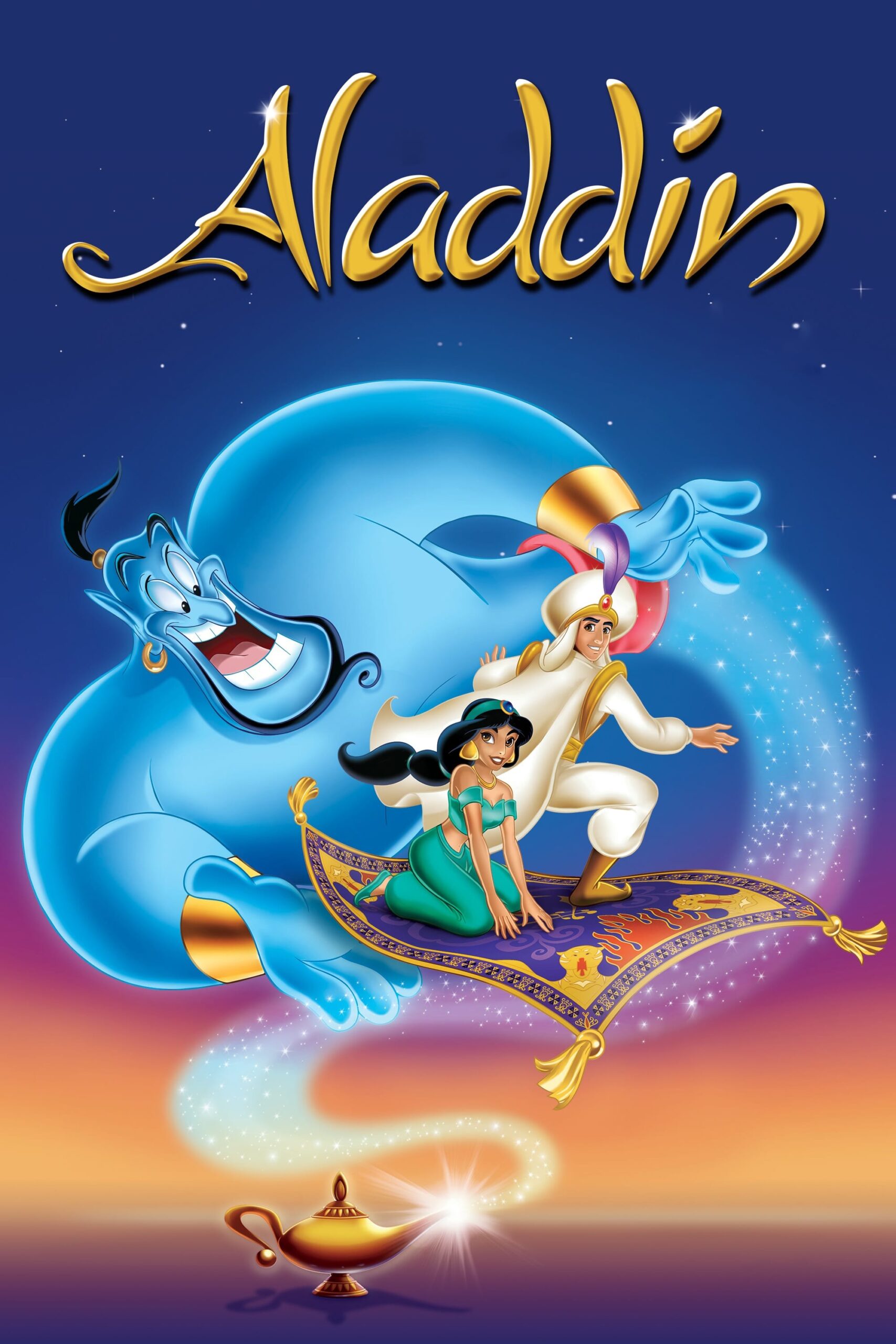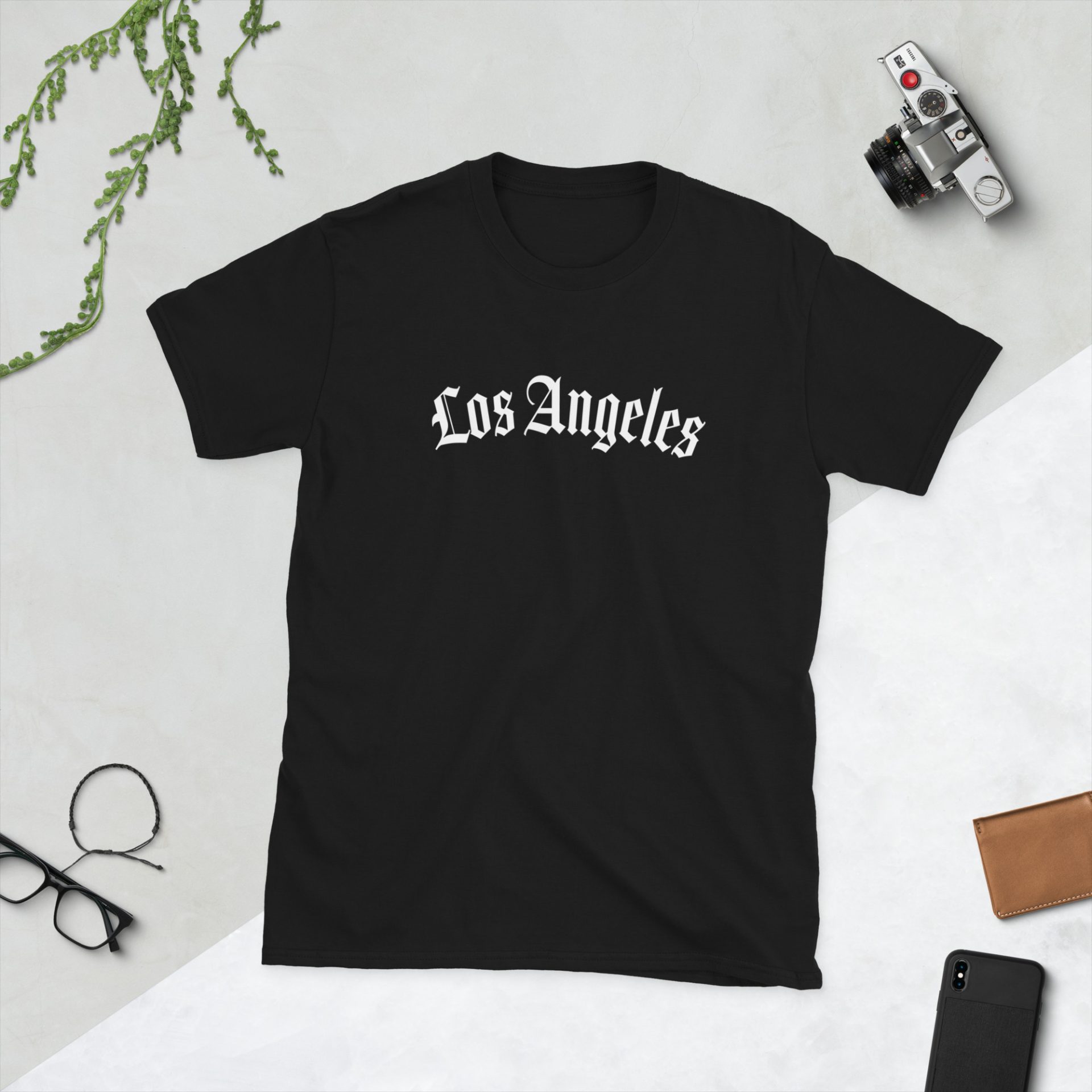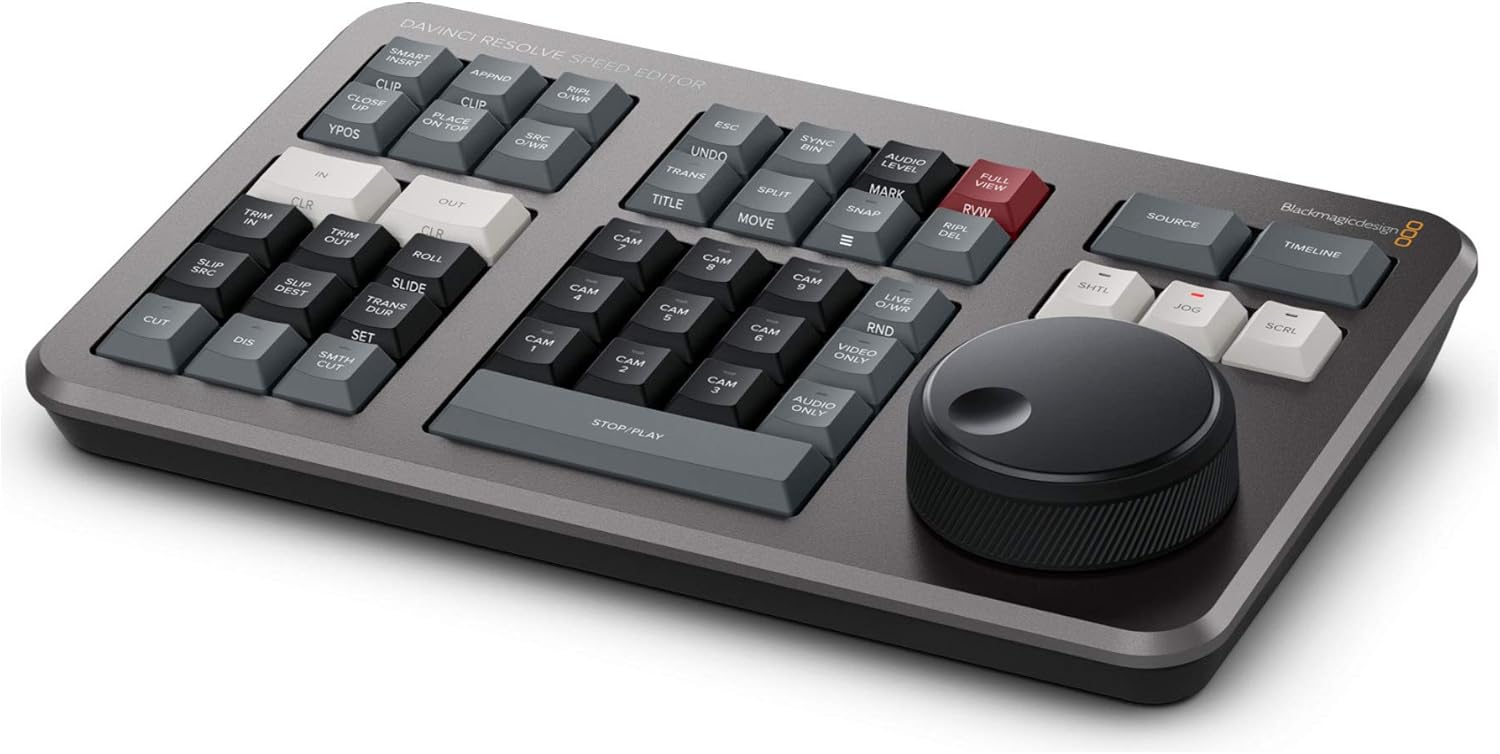Spoilers:
- Aladdin becomes a prince with wishes
- Jafar is the evil sorcerer
- Genie longs for freedom
- Aladdin uses last wish for Genie’s freedom
- Jasmine chooses Aladdin over royalty
- Jafar gets trapped as a genie
- Magic carpet helps Aladdin
- Iago is Jafar’s snarky parrot
- Abu turns into an elephant
Aladdin Movie Statistics
- Title: Aladdin
- Release Year: 1992 (animated), 2019 (live-action)
- Directors: Ron Clements, John Musker (1992); Guy Ritchie (2019)
- Genres: Animation, Adventure, Comedy, Family, Fantasy, Musical, Romance
Box Office
- 1992 Version: $504.1 million worldwide
- 2019 Version: $1.051 billion worldwide
Critical Reception
- 1992 Rotten Tomatoes: 95%
- 2019 Rotten Tomatoes: 57%
Awards
The animated version won 2 Academy Awards:
- Best Original Song: “A Whole New World”
- Best Original Score
Main Cast
- 1992 (Voice Cast): Scott Weinger (Aladdin), Robin Williams (Genie), Linda Larkin (Jasmine)
- 2019: Mena Massoud (Aladdin), Will Smith (Genie), Naomi Scott (Jasmine)
Soundtrack
- Notable Songs: “A Whole New World,” “Friend Like Me,” “Prince Ali”
Technical Details
- 1992 Runtime: 90 minutes
- 2019 Runtime: 128 minutes
“Aladdin,” directed by Ron Clements and John Musker, is a truly unique and illustrious depiction of a timeless narrative that provokes introspection and challenges societal perception. This brilliance is not solely confined to its vibrant, captivating visuals and iconic musical scores; it extends profoundly to its multidimensional characters and profound themes.Aladdin, the protagonist, is more than a street-rat striving for a better life; he is a character on a deeply emotional journey of self-discovery, challenging the viewer to re-evaluate their own perceptions of worth and identity. The film’s sentient embodiment of desire and consequence, the Genie, pushes the narrative into areas of heartfelt examination of the bondage of expectations and the freedom of self-acceptance.Jasmine, the rebellious princess, offers an inspiring feminist narrative as she fights against societal norms and theconstraints of her royal identity. Her desire to experience life outside the confines of her upbringing challenges conventional ideas of privilege and luxury.Clements and Musker manipulate the animation medium to uniquely convey these overarching themes. The soaring magic carpet ride metaphorically illustrates Aladdin and Jasmine’s escape from societal constraints, while the gleaming gold of the genie’s lamp contrasts sharply with the stone-grey reality of poverty-stricken Agrabah, subtly yet starkly highlighting societal disparities.Eloquence is manifested in the evocative lyrics and intoxicating melodies that propel the story. Lyrics, such as “A whole new world, A new fantastic point of view,” serve as a poignant reminder of the transformative power of perspective and the illumination brought by openness to change.In conclusion, Clements and Musker create in “Aladdin” a fantastical world that adroitly melds whimsy and wisdom, producing a thought-provoking narrative that disrupts traditional stereotypes, critiques social norms, and propels the viewer on an introspective journey, ultimately illuminating the extraordinary potential that lies within our authentic selves.
Introduction to Aladdin
Released in 1992, Disney’s “Aladdin” became an instant classic. It marked a high point in the Disney Renaissance, a period noted for animated film success. Directed by Ron Clements and John Musker, the movie is based on an Arabic folktale from “One Thousand and One Nights,” with a few Disney twists.
Interesting Facts
- Robin Williams voiced the Genie, whose energetic performance became iconic. His improvisation and unique style brought the character to life in unexpected ways.
- The film originally had a different opening and more somber tone before reworking to its current format. Cuts included songs and plot changes.
- The character of Aladdin was reimagined multiple times, notably influenced by Tom Cruise’s appearance to make him more appealing.
Bizarre and Interesting Speculations
Over the years, fans speculated about potential hidden meanings in the film. An urban legend suggested that Aladdin takes place in a post-apocalyptic future due to Genie’s pop culture references. Although amusing, Disney has never confirmed these theories.
Public Perception Over Time
Upon release, “Aladdin” was praised for its animation, songcraft, and voice performances. However, it faced criticism for cultural inaccuracies and perpetuating stereotypes. Over time, the film has been reassessed, leading to more critical conversations about representation.
The 2019 live-action remake attempted to address some of these issues, providing more nuance to characters and cultural context. Yet, opinions on these changes remain divided among audiences.
Aladdin (1992): A Snappy Beats Breakdown
Strap in. We’re diving into the whirlwind adventure of “Aladdin” through its razor-sharp story beats.
Opening Act
- Meet Aladdin – Street rat with a heart of gold.
- Jasmine Escapes – Princess on the prowl for freedom.
- The Villain Emerges – Jafar’s sinister plans laid bare.
Quest for the Lamp
- Cave of Wonders – Aladdin’s test of character. Spoiler: he passes.
- Genie Unleashed – Three wishes and a ton of fun.
- Prince Ali – From zero to hero, Aladdin’s royal makeover.
Romance and Revelation
- A Whole New World – Magic carpet date goals.
- Identity Crisis – Aladdin’s truth teeters on the edge.
- Jafar’s Power Play – Villain turns sultan, and sorcerer to boot.
Climactic Showdown
- Battle for Agrabah – Aladdin and Co. vs. Jafar’s tyranny.
- Jafar’s Demise – Greed for power leads to downfall. Classic.
- Wish Fulfillment – Genie’s freedom, Aladdin’s integrity shines.
Happy Endings
- New Ruler – Jasmine and Aladdin, Agrabah’s new power couple.
- Genie’s Departure – Freed at last, off to see the world.
There you have it. “Aladdin” in a nutshell – fast, furious, and an eternal favorite.

Aladdin: A Story Analysis
The opening of “Aladdin” is striking and memorable. It begins with a narrator’s voice, immediately engaging the audience with a promise of adventure and magic. The setting is established through vibrant visuals of Agrabah, showcasing a bustling marketplace, hinting at both the culture and the challenges faced by its inhabitants. The use of music sets a lively tone, suggesting both excitement and danger. This opening sets the stage for the characters and their arcs. It’s kinetic and hooks the viewer quickly.
Story Formula Breakdown
The formula of Aladdin can be broken down into key elements:
- Exposition: Introduces Aladdin, the street-smart hero surviving on the streets of Agrabah.
- Inciting Incident: Aladdin discovers a magic lamp containing the Genie, leading to his wish for wealth and status.
- Rising Action: Aladdin navigates palace life and attempts to woo Princess Jasmine while dealing with Jafar, the antagonist.
- Climax: A confrontation occurs between Aladdin and Jafar, culminating in a battle of wits and powers.
- Falling Action: Jafar is defeated, but Aladdin learns the importance of being true to oneself.
- Resolution: Aladdin frees the Genie, chooses love over status, and becomes a better person.
Character vs. Story Driven
“Aladdin” is more character-driven. While the plot contains numerous magical and adventurous elements, personal growth and relationships significantly impact the story. Aladdin’s journey from a street rat to a prince and his struggles with identity are central to the narrative, making characters and their development paramount.
Memorable Character Traits
Aladdin is memorable for his relatability. He is a sympathetic underdog with charm and wit. His flaws make him human, with moments of insecurity, ambition, and moral dilemmas that resonate with viewers. The Genie, voiced by Robin Williams, adds a layer of humor and warmth. His whimsical nature and memorable one-liners make him a standout character.
Main Characters Overview
- Aladdin: A clever street rat with dreams of a better life. He is resourceful, brave, and ultimately learns the value of honesty and love.
- Jasmine: The strong-willed princess of Agrabah who seeks independence. She is intelligent, spirited, and yearns to find her own path.
- Genie: A magical being with a vibrant personality. He provides comic relief and wisdom, embodying the theme of freedom.
- Jafar: The villain of the story, ambitious and cunning. His desire for power makes him a formidable antagonist.
- Abu: Aladdin’s monkey companion, loyal and protective. Adds comedic elements while highlighting themes of friendship.
- carpet: A magical flying carpet that serves as a mode of transportation, adding to the whimsy of the setting.
Story Flow Template
Use the following template for a similar story flow:
- Opening Scene: Establish setting and tone, introduce narrator or main character.
- Character Introduction: Describe the protagonist and their initial circumstances or struggles.
- Inciting Incident: Present a turning point that sparks the main adventure.
- Supporting Characters: Introduce other key characters, highlighting their relationships with the protagonist.
- Rising Action: Develop challenges faced by the main character, focusing on their growth and relationships.
- Climax: Build to a pivotal confrontation or decision that encapsulates the character’s journey.
- Falling Action: Show the aftermath of the climax, reflecting on the lessons learned.
- Resolution: Conclude with a summarization of character growth and the theme of the story.
Simple Summary of the Story
In simple terms, “Aladdin” is about a young man who discovers a magical genie and learns that true happiness comes from being himself rather than adopting a false persona. It explores themes of personal growth, love, and the importance of freedom.
Final Thoughts
In essence, “Aladdin” is not just an enchanting tale of magic and adventure; it’s a story about identity and the transformative power of love and friendship. Its characters remain relatable, and the lessons resonate across different audiences.
Inciting Incident
The inciting incident in “Aladdin” occurs when Aladdin finds the magical lamp. This moment sparks his journey and transforms his life.
Symbolism: The lamp represents potential and opportunity. It embodies the theme of ‘wish fulfillment.’ When Aladdin rubs it, he isn’t just awakening a genie; he’s unlocking his own ambitions and desires.
Act Structure
The movie follows a three-act structure:
Act 1: Setup
- Introduction to Aladdin and Jasmine: Establishes their backgrounds and desires.
- Aladdin’s daily struggles: Shows his marginalized existence in Agrabah.
- Discovery of the lamp: Aladdin’s life begins to change. He’s thrust into a new world.
Act 2: Confrontation
- Transformation into Prince Ali: Aladdin uses the genie to win Jasmine’s heart.
- Jafar’s plot: He aims to seize the lamp and gain power, highlighting the conflict.
- Love vs. deceit: Aladdin’s struggle to juggle his true identity with his new persona.
Act 3: Resolution
- Confrontation with Jafar: Peak of the conflict where true identities are revealed.
- Aladdin’s integrity: He uses cleverness instead of power to end Jafar’s tyranny.
- Freedom for the Genie: Aladdin’s selfless act ties the narrative together.
Climax
The climax occurs when Aladdin confronts Jafar in the palace. Tension skyrockets as lives hang in the balance.
Emotional capital comes from Aladdin’s growth. He’s no longer just a street rat; he embraces his identity and fights for what’s right. The build-up includes Aladdin’s internal conflict and the external threat Jafar poses.
Tension and Release
The film builds tension through:
- Aladdin’s duality: Constantly hiding his identity creates suspense.
- Jafar’s intentions: His manipulation keeps the stakes high.
- Romantic obstacles: Aladdin and Jasmine’s relationship faces hurdles, amplifying tension.
Release comes at key moments, like when Aladdin finally reveals his true self to Jasmine. The ultimate release happens when Jafar is defeated, and the spell is broken.

Aladdin Ending Explained
In the movie “Aladdin,” Aladdin uses his final wish to free the Genie instead of asking for wealth or power. This act of selflessness shows his growth throughout the film. Jasmine and Aladdin end up together, and the Sultan changes the law to allow her to choose her own husband.
How Writers Categorize the Ending
The ending can be categorized as a satisfying resolution. It wraps up character arcs and ties up the story’s main conflicts.
Symbolic, Thematic, and Speculative Meanings
- Freedom: Aladdin freeing the Genie symbolizes breaking free from constraints.
- Love: Aladdin and Jasmine’s union highlights love’s power over societal rules.
- Identity: Aladdin’s acceptance of who he is shows personal growth and confidence.
Loose Ends and Payoffs Resolved
- Aladdin achieves his dreams but learns selflessness is the true treasure.
- The Genie’s freedom resolves his long-standing servitude.
- Jasmine’s desire for independence is fulfilled with her choice to marry Aladdin.
Character Changes
Aladdin transitions from a street rat to a confident individual who values honesty and self-respect. Jasmine evolves from a sheltered princess to a strong woman advocating for her rights. The Genie changes from a cynical, trapped being to a free spirit.
Lessons for Writers
Writers can learn the importance of character growth. A strong ending should resolve key conflicts and highlight transformation. Selflessness can lead to greater rewards, and love can challenge societal expectations. These elements create a memorable and relatable conclusion.
Dialogue Style in Aladdin
The dialogue in “Aladdin” is a mix of humor, wit, and cultural references. Characters communicate with distinct voices that reflect their backgrounds and personalities.
Examples of Dialogue
Key characters like Aladdin, Jasmine, and the Genie have memorable lines. For instance:
- Genie: “You ain’t never had a friend like me!”
- Aladdin: “I’m just a street rat.” (showing humility)
- Jasmine: “I am not a prize to be won!” (asserting her independence)
Quintessential Character Moment
When Aladdin reveals his true self to Jasmine in the “A Whole New World” scene, it showcases vulnerability and honesty. The interaction emphasizes themes of acceptance and love.
Iconic Lines
Some of the most iconic lines include:
- “I’m ready to fly!” (Genie)
- “Do you trust me?” (Aladdin)
- “It’s a magic carpet!” (Jasmine)
Uniqueness of the Dialogue
The dialogue is unique because it blends modern slang with fairy tale elements. This makes it relatable without losing a sense of fantasy.
Dialogue Density
The script is dialogue-heavy, with key scenes relying on fast-paced banter and emotional exchanges, pushing the story forward through conversation.
Realism in the Dialogue
The dialogue is not entirely realistic. Characters often deliver lines for dramatic effect rather than realistic interactions, which suits the animated format.
Writing Lessons
Writers can learn to:
- Develop distinct character voices.
- Use humor and emotion to enhance storytelling.
- Employ dialogue to reveal character traits and motivations.
Scene Walkthrough
Consider the scene where Aladdin first meets Jasmine in the marketplace:
Aladdin: “I’m just a guy trying to survive.” (Establishing his character as relatable)
Jasmine: “You don’t look like a street rat.” (Highlighting her naivety and intrigue)
Aladdin’s quick responses showcase his charm and wit, making the interaction engaging. The humor here lightens the situation while building their connection. This scene sets the tone for their relationship, blending tension and attraction.
Aladdin: A Poetic Take
In a lamp dim-lit, forgotten by time,
A spark ignites the mundane, sublime,
A thief in the night, with dreams in his palm,
Jasmine dances, the world holds its calm.
A genie appears, with hopes wrapped in chains,
Three wishes to fly, or ease all your pains,
Yet freedom’s the prize, a paradox grand,
Where wish meets the heart—can you wield such a hand?
Magic carpets glide, but are they just dreams?
With every high flight, uncertainty screams,
In this kingdom of sand, what’s real, what’s a game?
The heart knows its worth, never plays for just fame.
Lessons to Learn
- There’s power in truth, in love’s gentle art,
- Not every treasure is measured in gold.
- A street rat can own what most hearts have sold.
In a world where illusions mask bright, shining day,
Aladdin reminds us to find our own way.
Writing Insights from Aladdin
Ron Clements and John Musker’s Aladdin offers several unique lessons for writers. Here are key takeaways:
-
Character Flaws as Strengths
Aladdin’s perceived flaws make him relatable. He’s cunning but also insecure. Use characters’ weaknesses to drive growth and connection.
-
Strong Supporting Characters
The Genie steals scenes but also emphasizes Aladdin’s journey. Build characters that enhance the protagonist’s arc while standing out themselves.
-
Clear Pursuit of Desires
Characters are driven by clear goals. Aladdin’s desire for freedom fuels the plot. Ensure characters’ motives are visible and impactful.
-
Dynamic Settings Influence Story
Agrabah’s vibrant world shapes the narrative. Use settings not just as backdrops but as active elements that affect character choices.
-
Humor and Heart Balance
The film mixes humor with emotional moments. Create layers in your writing to keep the audience engaged on multiple levels.
-
Revealing Character Through Action
Aladdin’s decisions show who he is. Show your characters’ true natures through their actions, not just dialogue.
-
The Role of Transformation
Transformations occur on multiple levels, not just physical. Characters grow internally throughout the story. Highlight personal evolutions.
-
Use of Conflict
Multiple layers of conflict drive the plot. Balance external challenges with internal struggles for depth and complexity.
These insights can enhance your storytelling. Don’t just follow trends; learn from influential works like Aladdin.
Ron Clements and John Musker: A Brief Discography
Ron Clements and John Musker are well-known Disney directors and writers, famous for their animated films. Here are some key titles from their collaboration:
- The Great Mouse Detective (1986) – Co-directors
- Aladdin (1992) – Co-directors and writers
- Pocahontas (1995) – Co-directors and writers
- The Princess and the Frog (2009) – Co-directors and writers
- Moana (2016) – Co-directors and writers
Their style features engaging storytelling with strong character development, often infused with themes of adventure and self-discovery.
Review 1: Excerpt: “Aladdin, with its central themes of freedom and identity, is an exquisitely realized piece of animated film making, possibly Disney’s best full-length feature to date. The narrative of ‘Aladdin’ is strong and compelling. Each character has a clear arch, something that is often ignored in modern movies.”Link: https://www.nytimes.com/1992/11/11/movies/review-film-aladdin-from-disney-under-the-spell-of-orientalist-fantasy.htmlReview 2: Excerpt: “Far from the run-of-the-mill fairy-tale adaptation, Aladdin offers a magical carpet ride into a world of eastern enchantment. Paying lip service to the old-world charm but employing the wherewithal of pop culture, Aladdin is a fun and frolicking adventure that amazes and captivates the audience’s attention — children and adults alike.”Link: https://variety.com/1992/film/reviews/aladdin-4-1200430850/Review 3: Excerpt: “Aladdin is more than just an entertaining movie. It is a triumph of storytelling, translating age-old folklore into a vibrant and beguiling cinematic narrative. The animation pops with an untamed vigour, the songs are plush and soulful, the humor is fresh and genuinely funny, and the overall impression is of a creative team working at the peak of their abilities.”Link: https://www.rogerebert.com/reviews/aladdin-1992Review 4: Excerpt: “While it certainly has its darker moments, Aladdin largely skirts past the threatening dangers of its story to focus more on enchantment and romance. The film uses its Arabian backdrop as a shield to hide itself from any negative criticism lobbed its way and arguably uses it as a vehicle to move the narrative along.”Link: https://www.empireonline.com/movies/reviews/aladdin-2-review/Review 5: Excerpt: “Aladdin is a milestone in animation and in the art of musical cinema. A canvas moving to the rhythm of imagination, creativity, and audacity, this film is more than a landmark — it’s a testament to the enduring power of Disney magic.”Link: https://www.theguardian.com/film/2019/may/23/aladdin-review-will-smith-naomi-scott.
- ‘Aladdin’ (1992) directors Ron Clements and John Musker put …
- Aladdin (1992) – IMDb
- User blog:Ratigan6688/How I Rank The Films Directed by Ron …
- My new interview with animation legend John Musker (The Little …
- Episode 21 – Aladdin (Ron Clements & John Musker, 1992) (with …
- Directors Ron Clements and John Musker Bring Disney’s Moana To …
- Nine Old Mentors: Ron Clements and John Musker’s Reflections …
- Susan Egan on X: “This is the first glimpse I ever had of Meg – the …
- John Musker & Ron Clements Clear Up Rumors About Their Movies …
- Aladdin (1992 Disney film) – Wikipedia




Leave a Reply